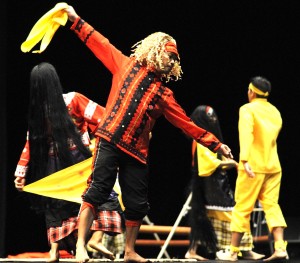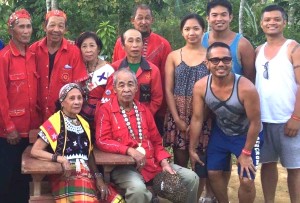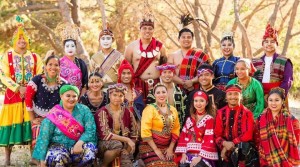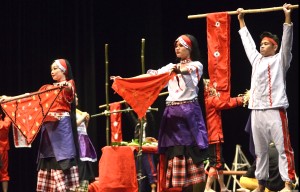Parangal Dance to perform in SF, Hawaii, Italy, premiere new works

Scene from “Binanog.” WILLIAM LEE
SAN FRANCISCO — San Francisco-based Parangal Dance Company will perform here, in Hawaii and Italy this year, the Filipino folk dance group announced.
In April it will perform in Hawaii during the Merrie Monarch Festival at the Edith Kanaka’ole Tennis Stadium (April 19). It will then have performances at Hilo Daijingu Hall (April 20) and at Kalani Resort (April 22).
In addition to performing its current repertoire of dance pieces, the group will premiere several new works.
“Binanog,” a courtship dance featuring choreography that mimics the movements of the Philippine eagle, and “Pahampangon,” a healing ritual, are from the Panay Bukidnon people from the Visayas region in the Philippines.
The new works will be performed again in June at the annual San Francisco Ethnic Dance Festival; final dates and venues will be announced later in the year.
Then it’s off to Italy from July 25 to Aug. 7, where the group will dance repertoire favorites at the Latium World Folkloric Festival.
Parangal is Tagalog for “tribute,” and the group pays tribute to Filipino dance heritage by helping to preserve and promote it.

Eric Solano (right) and dancers from Parangal Dance Company during field research with Caballero family. CONTRIBUTED
Founding artistic director Eric Solano says, “Our mission is to create global awareness of the indigenous practices of ethnic groups in different parts of the Philippine archipelago.”
Direct from the masters
The company’s ethos is to research and learn their choreography directly from masters or experts from different ethnic groups across different regions in the Philippines.
For the new Panay Bukidnon pieces, Solano and nine of his dancers traveled to the Philippines last year to learn the choreography from the Caballero family, whose members include Rosita, a binukot or women who master their people’s traditions such as oral poetry, music, embroidery, etc.
“It’s important to immerse and learn from them. Not many traditions and dances from Panay are showcased in many, if not most, dance groups. We need to learn, preserve and educate.”
Plight of lumad
At the group’s Hawaii performances, Solano will premiere a new piece, “Padayon,” which he choreographed and was spurred by the ongoing problems faced by several indigenous groups in Mindanao.
“It’s to showcase the plight of indigenous peoples in Mindanao, also known as lumad, such as the Ata Manobo, the Talaingod, the Mandaya.
“They have been displaced due to harassment, ancestral domain claims and attacks or killings of their leaders and elders due to resistance to environmental plunder.”
“Padayon” will be performed again in San Francisco in June.
Support
Parangal’s current repertoire includes choreography and pieces from the Gaddang (also spelled Ga’dang) and Kalinga groups in Luzon; the Tagbanua in Palawan; and the Maguindanao, Maranao, Subanen, T’boli, Talaandig, Tausug (also spelled Ta’u Sug) and Yakan from Mindanao.
The dancers’ different attires are likewise made by the ethnic groups and acquired by Parangal as part of its support for the communities it learns from.
While the full company numbers around 50 dancers, a more streamlined contingent will be traveling to the performances abroad.
Touring with the dancers are dance director Ritchel Tan and dance masters Marlon Dumlao, Rachel Perey and Major Julian, who also doubles as music director.
The group usually performs to chants, songs and music made by instruments indigenous to the Southeast Asian region such as kulintang (horizontally laid knobbed gongs), gandingan and agong (hanging gongs), sarunay and gangsa (metal xylophones), and tongatong (percussion bamboo poles).
For details on upcoming shows or on how to book the group for performances, visit Parangal.org or Fb.com/Parangal.
READ previous coverage of Parangal Dance Company here.



